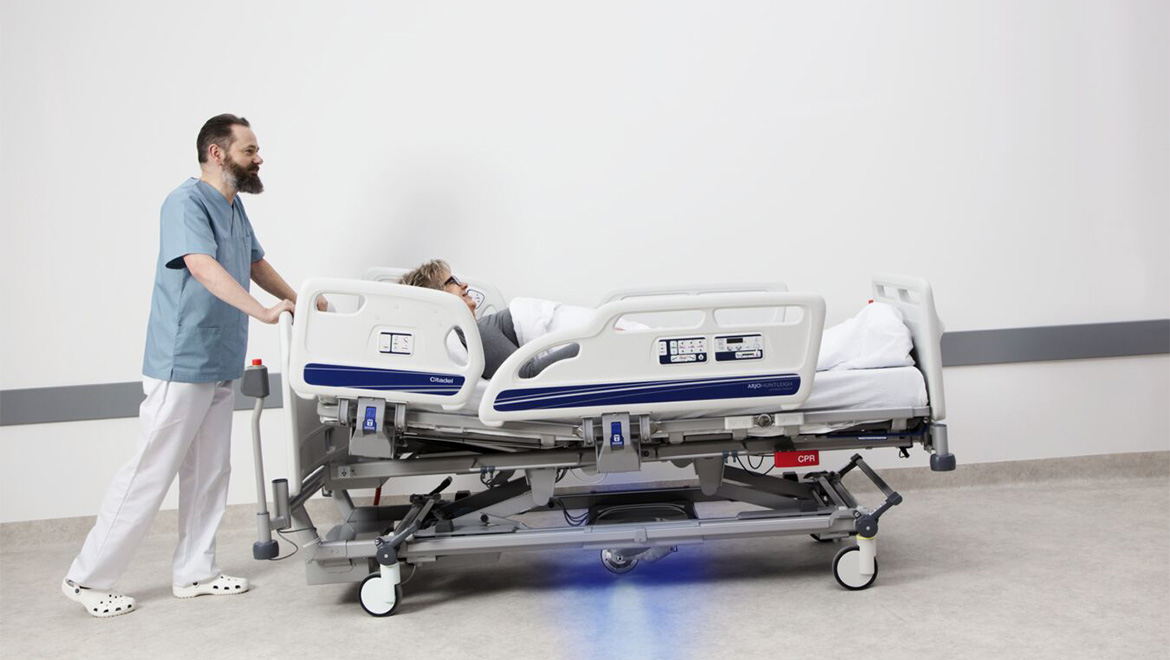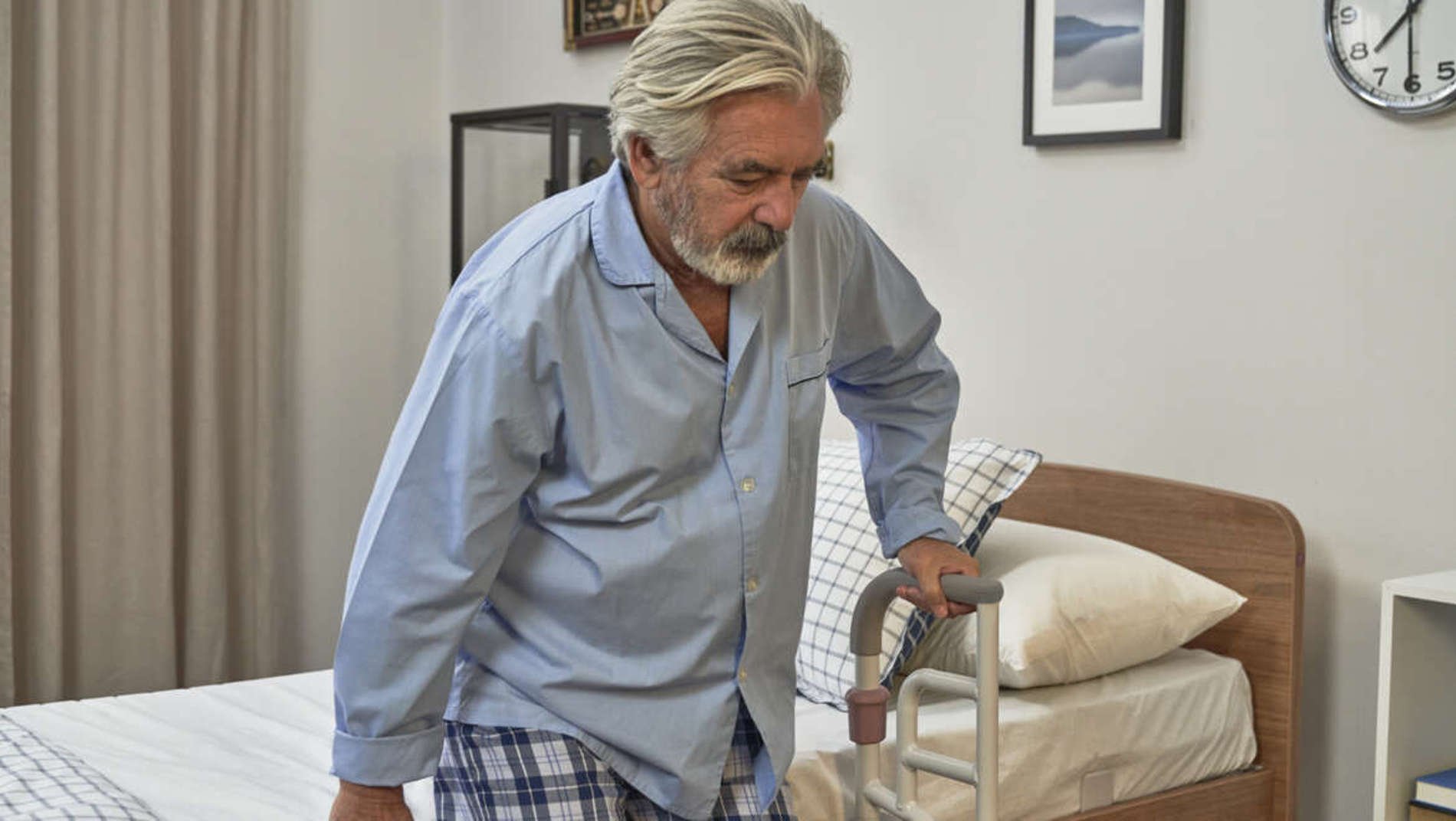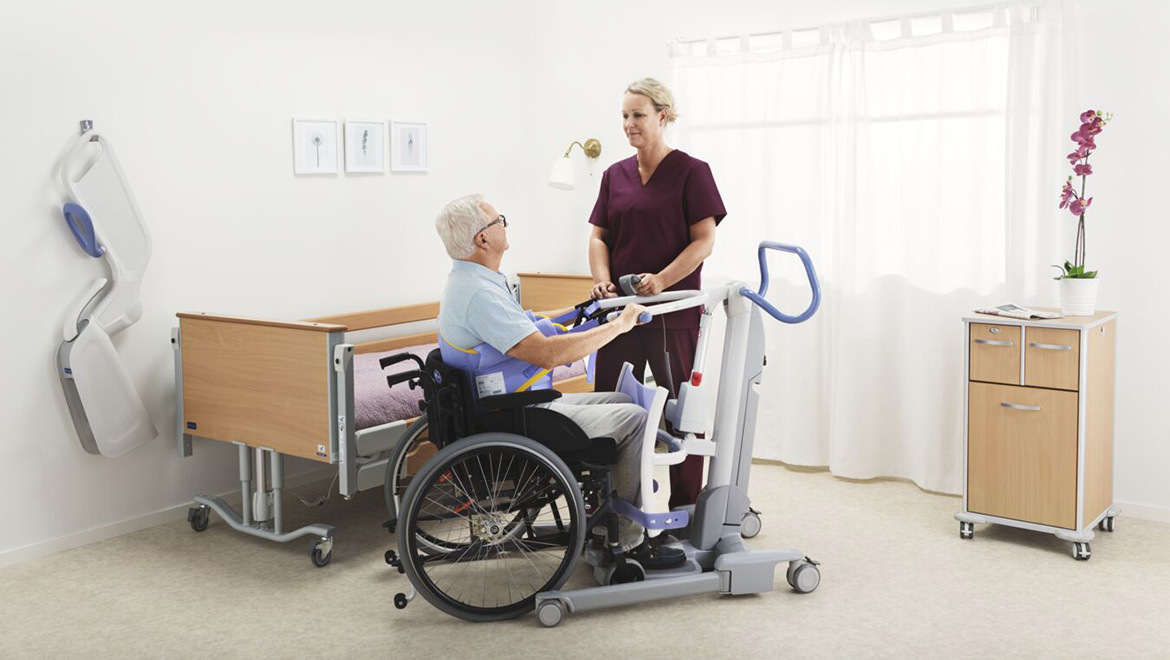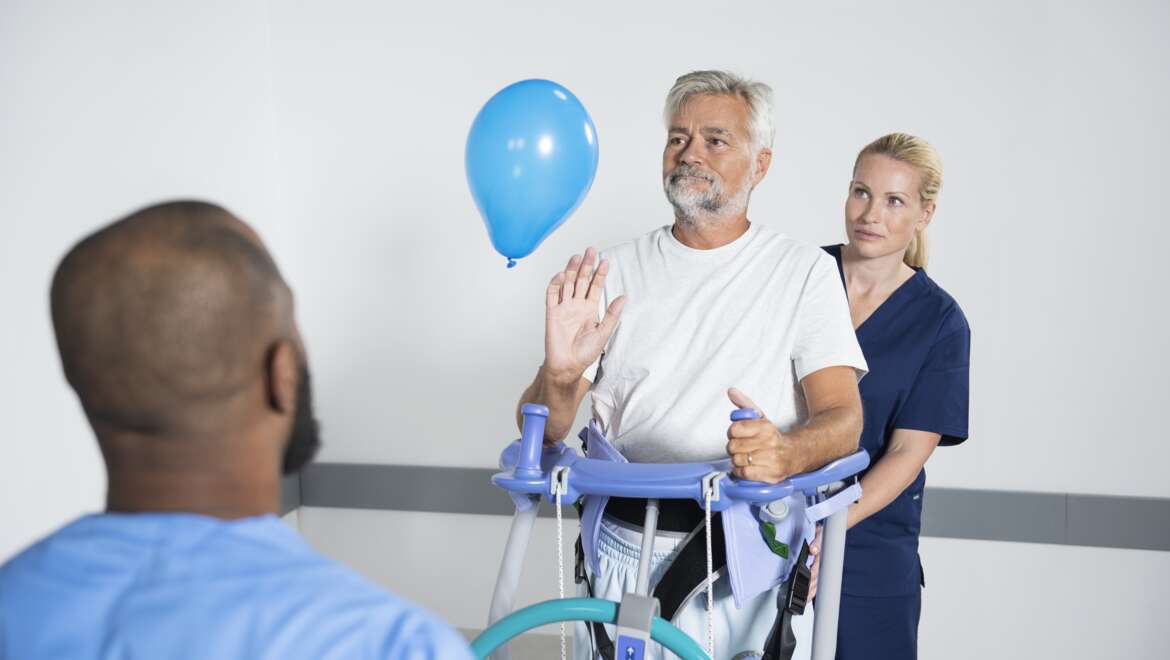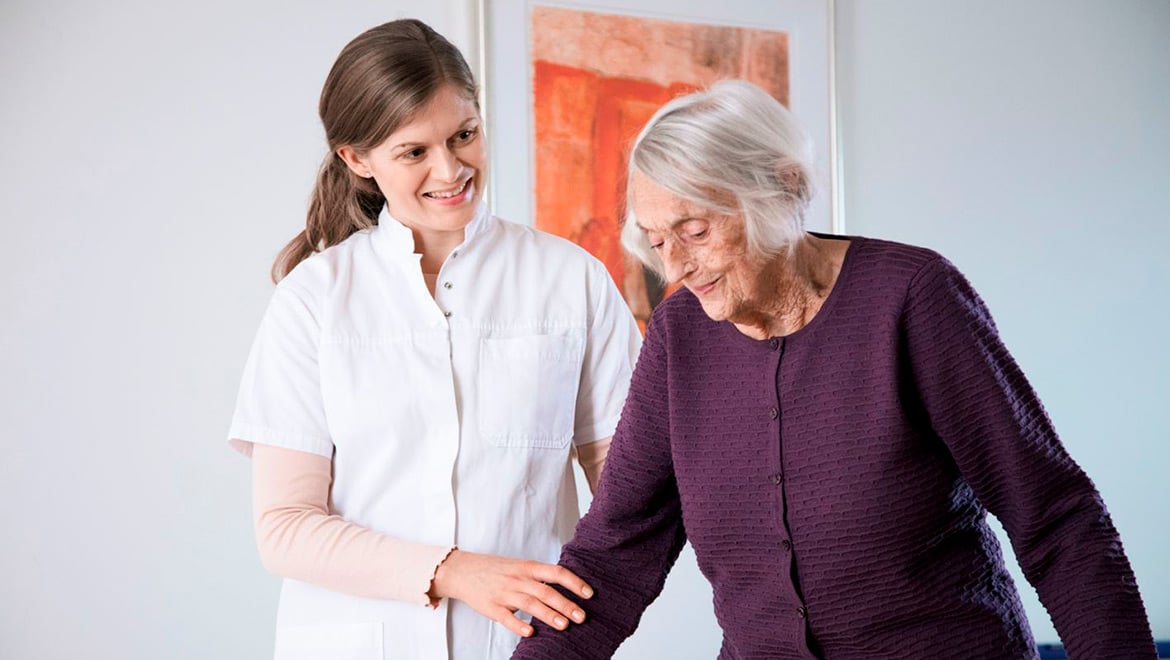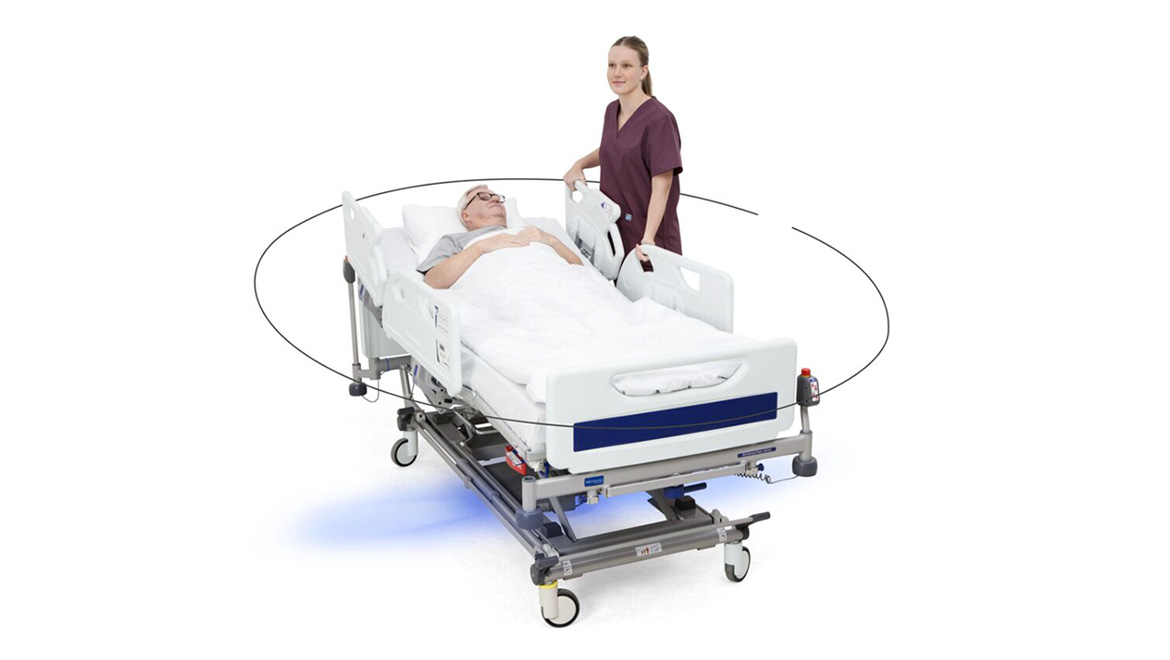The ergonomic effects on caregivers when transporting patients in hospital beds
Transporting patients on hospital beds is an ergonomically high risk activity for caregivers. However, the use of powered assisted beds can have a positive impact on their work lives. Read an extract from 'A case for powered bed transport' whitepaper below.
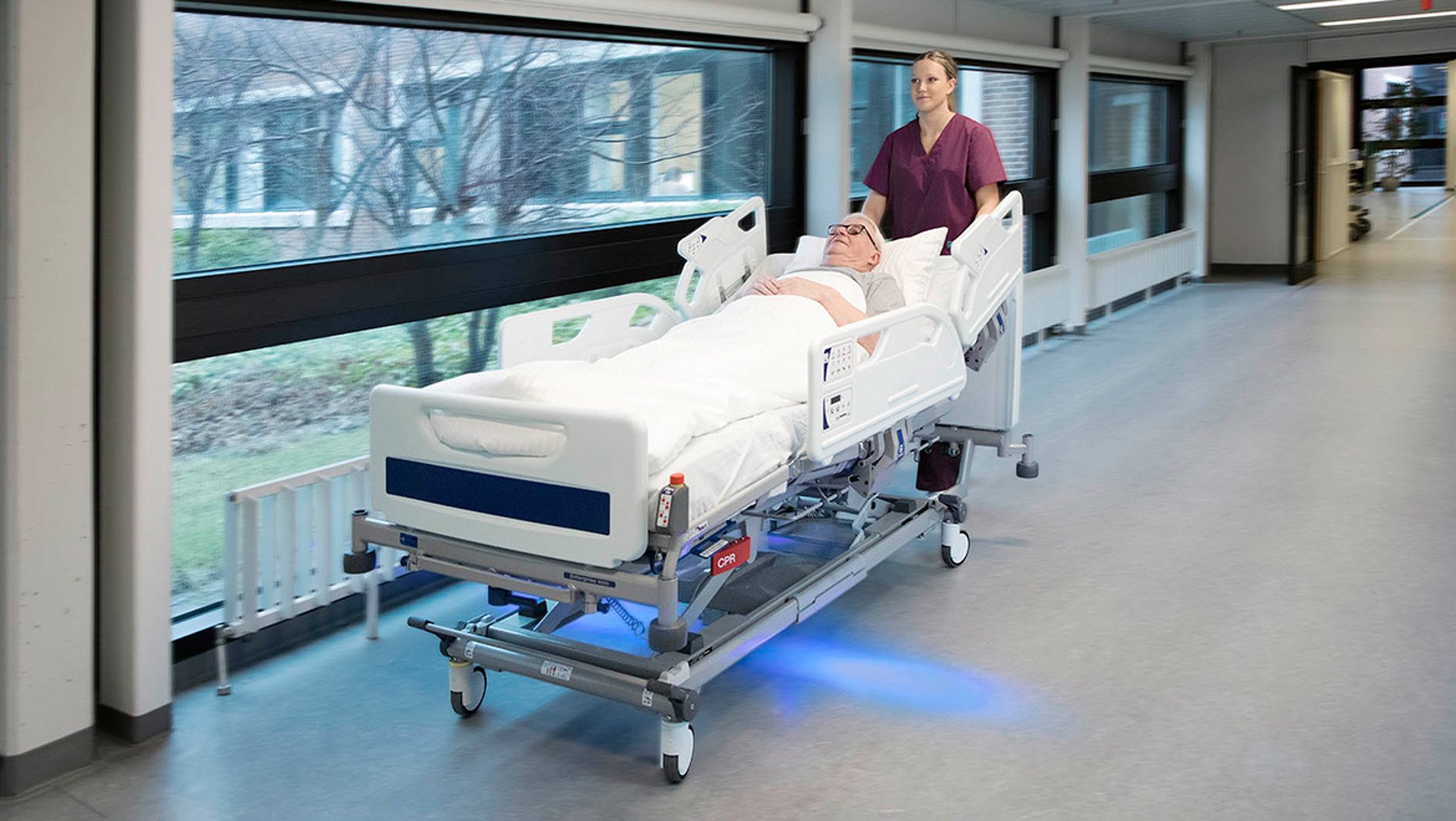
Transporting patients in beds throughout hospitals is an ergonomically high risk patient handling task1-8 and has been rated as one of the top patient handling tasks that result in complaints of musculoskeletal pain9. Performing such an activity can stress the musculoskeletal system and exceed the body’s capabilities, frequently resulting in low back pain, spinal problems,10 shoulder injuries11-12 and, in general, many of the patient handling injuries that are found in healthcare environments13.
Ergonomic of patient transportation
Pushing and pulling excessive loads (patients) on a repeated basis, constitutes a high ergonomic risk, as does any task or motion that negatively impacts the musculoskeletal system due to excessive stress or force.
Awkward postures are due to various factors such as available space, equipment used, number of caregivers handling the patient, and caregiver anthropometry.
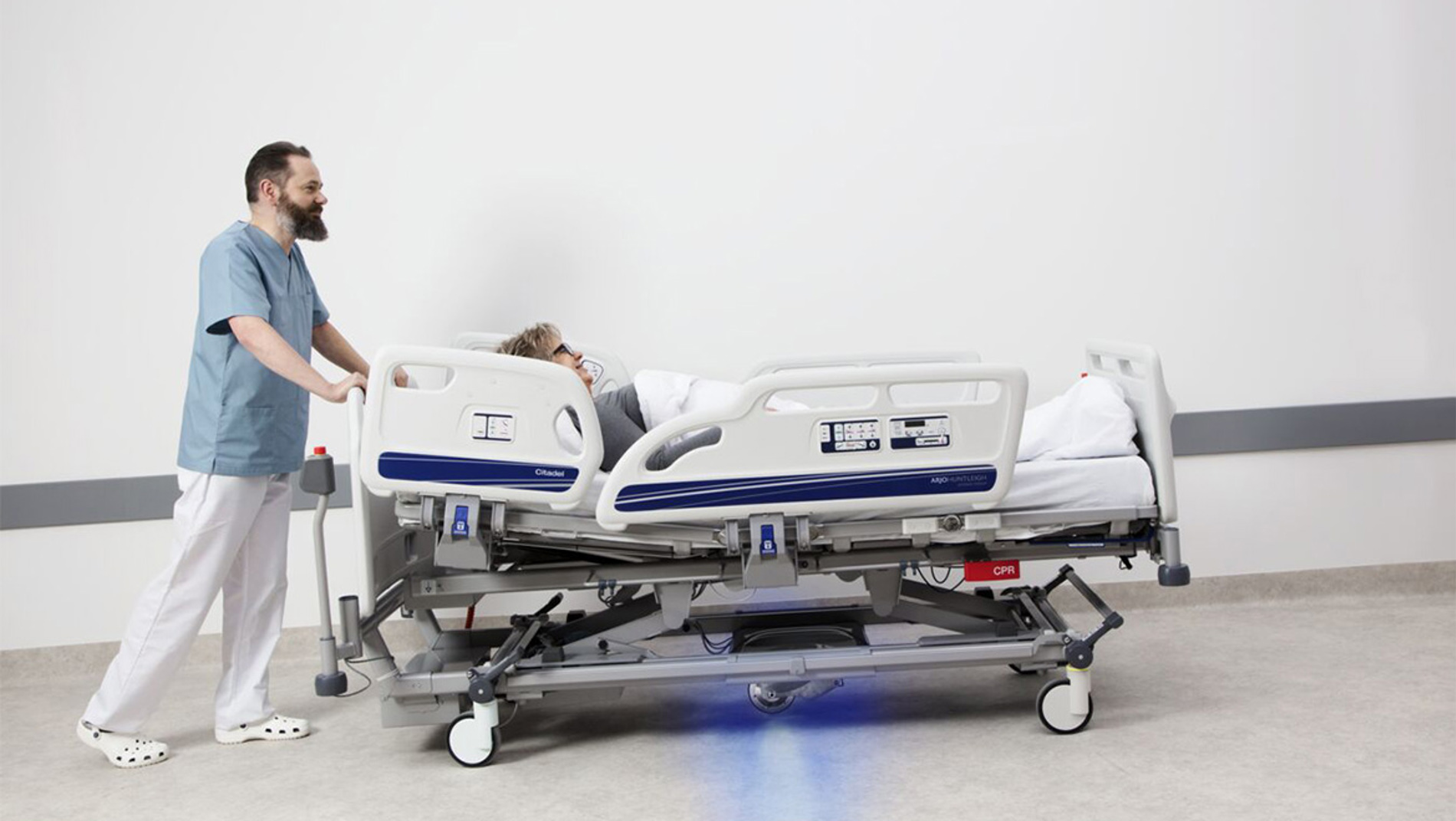
To reduce the excessive ergonomic effort and push forces when transporting patients, adaptations have been made to some beds adding power drive features and fifth wheels. Battery-powered bed pushing devices have also been designed to assist in bed transport20-22.
The most effective way to eliminate ergonomic risk is to remove the hazard, nonetheless hospital staff must transport patients as part of their daily work lives. Fortunately, there are new technologies that can greatly reduce these risks: To read more about the impacting forces on caregivers and how powered transport devices have a proven impact on eliminating these forces download the whitepaper.
References:
[1] Guo, Z., Yee, R.B., Mun, K.R. & Yu, H. Experimental evaluation of a novel robotic hospital bed mover with omni-directional mobility. Appl Ergon. 2017 Nov;65:389-397.
[2] Paul, G. & Quintero-Duran, M. Ergonomic assessment of hospital bed moving using DHM Siemens JACK. Proceedings 19th Triennial Congress of the IEA, Melbourne 9-14 August 2015. Retrieved February 11, 2018 from https://eprints.qut.edu.au/86239/3/86239.pdf.
[3] Waters T., Lloyd, J.D., Hernandez, E. & Nelson, A. AORN Ergonomic Tool 7: Pushing, Pulling, and Moving Equipment on Wheels. AORN J. 2011 Sept;94(3):254-260.
[4] Matz, M. (2010). Rationale for Including the PHAMA in the 2010 Guidelines for Design and Construction of Health Care Facilities. In Borden, C.(Ed), Patient Handling and Movement Assessments: A White Paper. Dallas:The Facilities Guidelines Institute.
[5] Kim, S., Barker, L.M., Jia, B., Agnew, M.J., Nussbaum, M.A. Effects of two
hospital bed design features on physical demands and usability during brake
engagement and patient transportation: a repeated measures experimental study. Int J Nurs Stud. 2009 Mar;46(3):317-25.
[6] AORN Workplace Safety Taskforce, Safe Patient Handling and Movement in the Perioperative Setting. Denver, CO: Association of periOperative Registered Nurses [AORN], 2007.
[7] Nelson, A. L. (2006). Variations in high-rick patient handling tasks by practicesetting. In A.Nelson (Ed.), Safe Patient Handling and Movement: A Practical Guide for Health Care Professionals (pp. 47-56). New York: Springer.
[8] Department of Veterans Affairs (VA), VISN 8 Patient Safety Center of Inquiry. Patient Care Ergonomics Resource Guide: Safe Patient Handling and Movement.(2006). Tampa, FL. No longer available.
[9] Paul, G. & Quintero-Duran, M. Ergonomic assessment of hospital bed moving using DHM Siemens JACK. Proceedings 19th Triennial Congress of the IEA, Melbourne 9-14 August 2015. Retrieved February 11, 2018 from https://eprints.qut.edu.au/86239/3/86239.pdf.
[10] International Organization for Standardization (ISO). Ergonomics —
Manual handling of people in the healthcare sector. Reference number ISO/TR 12296:2012(E). 2012.
[11] J+J Flooring Group. Flooring Selection for Acute Care Facilities: Safety
Implications. ND. https://www.jjflooringgroup.com/wpcontent/uploads/Safety_Technical_White_Paper_FINAL.pdf.
[12] Waters T., Lloyd, J.D., Hernandez, E. & Nelson, A. AORN Ergonomic Tool 7: Pushing, Pulling, and Moving Equipment on Wheels. AORN J. 2011 Sept;94(3):254-260.
[13] OSHA (2003). Ergonomic Guidelines for Nursing Homes Washington, DC: US Department of Labor
[20] Department of Veterans Affairs (VA), Center for Engineering and
Occupational Safety and Health (CEOSH). Safe Patient Handling and Mobility
Guidebook. (2016). St. Louis, MO.
[21] International Organization for Standardization (ISO).
Ergonomics — Manual handling of people in the healthcare sector. Reference number ISO/TR 12296:2012(E). 2012.
[22] Matz, M. (2010). Rationale for Including the PHAMA in the 2010 Guidelines for Design and Construction of Health Care Facilities. In Borden, C.(Ed), Patient Handling and Movement Assessments: A White Paper. Dallas:The Facilities Guidelines Institute.
